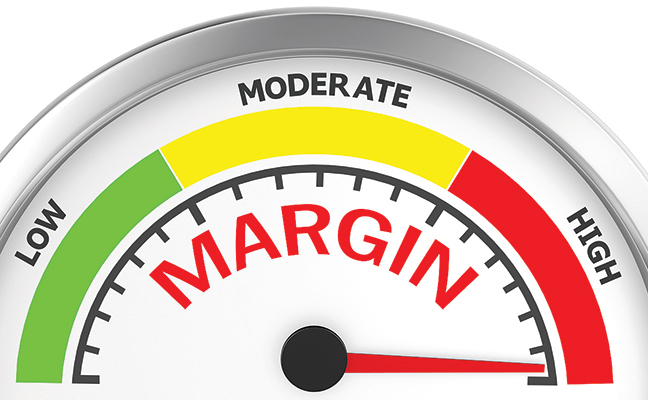
One of the primary reasons companies explore opportunities in the foodservice industry is to take advantage of profitability that far outpaces retail or consumer packaged goods. It is a primary reason the center-of-the-aisle in retail (pre-Covid-19) has given way to the perimeter – or grab-and-go meals. From a demand perspective, American society is overworked and time is a sought-after currency. Prepared foods and foodservice meet the needs of both the seller and the buyer.
While Covid-19 will impact dining-out behavior in the short-term, once a vaccine or treatment exists, we expect traffic and check averages to return to pre-Covid-19 levels at a relatively accelerated pace. Why? Because in addition to its structural permanence in American culture, foodservice can serve as the center of a social gathering, special event celebrations, commuting portability, a quick pick-me-up and an opportunity to indulge (and take a night off from calorie counting).
Gross Margins Vary Greatly Due to a Number of Factors
As foodservice manufacturers know, gross margins vary greatly by product category, supply chain structure, sales structure, customer portfolio, label orientation and also by foodservice segment. We have used our best thinking from our collective years consulting in the industry to develop a benchmark of gross margins manufacturers can roughly expect by segment (as shown in the table.) We use 45 percent as the generally accepted average gross margin.
An Estimate of Gross Margin Percentage (ACV) by Foodservice Segment*
| Segment |
Gross Profit (ACV) |
Index (to 45%) |
Factors to Consider (Excluding Covid-19 Impact) |
| FSR |
45% |
100 |
Street business high, chain business lower, trade spending, low GPO penetration, volume play (cost-plus) for chain business |
| QSR |
40% |
89 |
Program accounts, high chain (80%) concentration, trade spending, low GPO penetration |
| Supermarkets |
50% |
111 |
Prepared foods focus, cross-channel benefits, fewer outlets than segments |
| Convenience Stores |
55% |
122 |
Grab-and-go, recession insulated, commissary middleman, gas drives visits, perception |
| K-12 |
35% |
78 |
District bidding, lower GPO, FSM penetration high, special formulations, government subsidies, private schools boost margins |
| C&U |
50% |
111 |
Higher FSM penetration, private schools share only 7 percent, multiple service systems, food companies scrutinized |
| B&I |
35% |
78 |
Highest FSM penetration (95 percent), OCS, tied to employment rates, employee retention tool |
| Lodging |
55% |
122 |
RevPar poor, midscale breakfast opportunity, brand driven, low FSM/GPO penetration |
| Recreation |
40% |
89 |
Moderate GPO/FSM penetration, concessions lower, box seats higher GP, competitive intensity, corporate seats tied to employment |
| Hospital |
40% |
89 |
GPO saturated, buyer power, FSM penetration moderate, special formulations, Medicaid influence, volume play |
| LT Care/Sr. Living |
55% |
122 |
Growing retirement population, dining is selection factor, $23 average daily meal cost, major retirement centers have buyer power, lower GPO penetration, resident satisfaction mixed |
| *Notes:Excludes revenue paid to trading partners, such as operators, distributors, GPOs such as earned income, market pricing, food show allowances, growth programs, deviated pricing, bid, etc. Commodity and packer labels are very low GP and high trade spend; brand/product differentiation (pull) are high value-add, less trade. P&L Impacts: Sales and marketing, G&A, trade leads to operating income – excluded.
Source: Foodservice IP |
|||
There Are Ways to Protect Profitability – Even During the Pandemic
While these are only estimates and Covid-19 shows few signs of going away soon, we believe manufacturers consider the suggestions as a rule of thumb – even during the pandemic. There are three instrumental ways (among others) manufacturers can ensure the value they bring to the channel helps protect profitability:
- Differentiation – this can include product differentiation, segment expertise, service-level differentiation, etc. Price should never be a differentiator, as we are taught in Marketing 101. Michael Porter of the Harvard Business School claims sustainable competitive advantages (SCAs) are only achievable via differentiation.
- Outstanding Service – showing your customers you understand their segment, product or customers is an easy enough idea that is often lost in trying to hit numbers and chasing the “wrong” clients. A rule of thumb is it is 25 times more expensive to find a new client than it is to keep one satisfied.
- Innovation – yes, this is used in just about every textbook and business article but there is a reason. Developing different pack sizes, varieties, education, formulations, salesforce structures, logistics, direct-to-customer (e-commerce) and quality tiers keep clients and prospects interested. Find a point of differentiation and create a basis of innovation around it.
Like the content? Please sign up to receive our communication.

Recent Comments